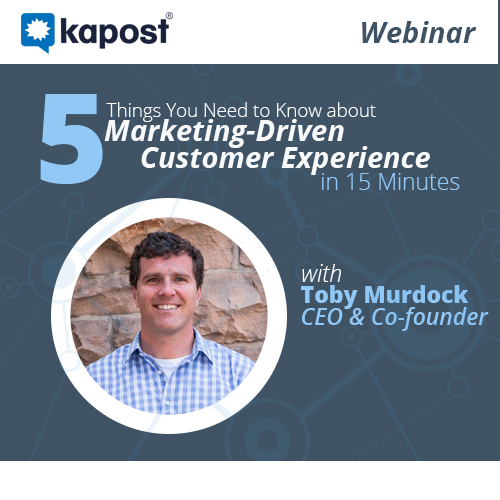Our story begins a decade ago, when it was a much simpler picture for B2B marketers.
Back in those days, B2B vendors went to market using no more than two or three channels. Maybe you created some ads and held a few events, but—more than anything—your sales team delivered your messaging and products to the market. You had agency partners helping with creative, and for the most part, the marketing structure behind these efforts was monolithic and straightforward.
“A tidal wave of new technology has crashed over the marketing landscape, resulting in big changes for marketing.”
With just a few channels to manage, it was pretty simple to deliver a consistent message and a singular, effective customer experience. But B2B marketing has become much more complicated. A tidal wave of new technology has crashed over the marketing landscape, resulting in big changes for marketing.
First off, it’s led to the Age of the Customer—an era in which the customer is in control, and marketers need to meet the customer when and where they want to be met, serving them through the channels they want to be served. Secondly, all that technology has fostered of a variety of different channels and tools through which marketing must effectively communicate to reach the buyer.
As a result, marketing has split into a number of functional groups, each owning a few of those channels. Corporate communications might run the blog, social media, and video at the top of the funnel. Demand generation might run emails and white papers at the middle of the funnel. Product marketing might run webinars and sales enablement towards the bottom of the funnel.
The problem is that each of these functional teams works in a silo, creating their own content for their own channels in a way that’s disconnected from the other groups that also own pieces along the buyer’s journey. As a result the buyer gets different, inconsistent messages at every stage. All of the messages the buyer receives during their journey make up the customer experience, and without governance, this experience is inconsistent and jarring.
Corporate communications might describe the value proposition as A, B, and C. Demand gen might discuss 1, 2, and 3. Product marketing then refers to X, Y, and Z, and so on.
The buyer is ping-ponged from different—often inconsistent or even contradictory—messages, and the buyer is left wondering what, exactly, the vendor does. Thus, conversion rates suffer at every stage of the funnel because the buyer is presented with inconsistent experiences and messages across channels, resulting in a confusing, chaotic, disjointed customer experience.
How Kapost Enables Marketing-Driven Customer Experience
Kapost serves as a layer to unify all of marketing’s efforts and provide a coherent, consistent customer experience, leading to more effective conversion rates at every step and greater growth for B2B marketers. Kapost sits above all those different channels and organizes siloed marketing teams, so they can work together and deliver consistent messaging and content across every touch point, tool, and channel along the customer experience.
Whether it’s social, video, and blogging at the top, or email and webinars in the middle, sales enablement and case studies at the bottom, or help articles and customer success touch points post-sale, all of the content that feeds these channels is planned inside of Kapost, created inside of Kapost, distributed across channels through Kapost, and analyzed as data from these channels comes back into Kapost, giving marketers a complete view of the customer experience and how content performs every step of the way.
In this way, B2B marketers are enabled to strategize and deliver a coherent, effective customer experience, where the customer receives a singular, consistent message across all touch points along the B2B customer journey, yielding better conversion rates at every step and greater growth for B2B businesses.


